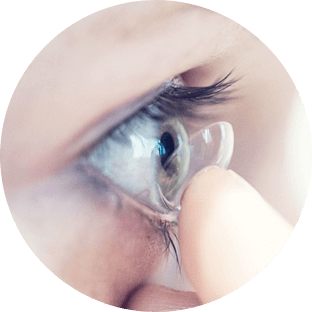What is Open-Angle Glaucoma?
Glaucoma has the nickname the silent thief of sight. This nickname mainly refers to open-angle glaucoma or primary open-angle glaucoma.
Other types of glaucoma come on fast and show symptoms rapidly. Open-angle glaucoma or POAG does not.
It develops slowly over time without any symptoms. Then suddenly, it shows symptoms, at which point it has damaged your vision permanently.
Keep reading to learn more about open-angle glaucoma and what you can do to prevent vision loss from this scary eye disease.
What is Glaucoma?
Glaucoma is a term for a small collection of eye diseases that all increase pressure in your eyes. Eye pressure, called intraocular pressure or IOP, can get so high that it presses on and damages your optic nerve.
Your optic nerve is what sends light signals from the retina in the back of your eyes to your brain. Your brain receives and interprets those signals and creates what you see.
Without a healthy functioning optic nerve, light can’t reach your brain, and you cannot see. Open-angle glaucoma or POAG does this slowly over a long period. It develops so slow that it doesn’t cause any vision issues or pain, so you have no idea your IOP is rising.
But, eventually, your IOP gets high enough that it does create symptoms. Once symptoms occur from POAG, your optic nerve has sustained damage, and your eyesight is permanently affected.
That’s because there is no way to repair your optic nerve once it gets damaged. The only way to prevent vision loss from glaucoma, especially POAG, is by early diagnosis. Once you have a diagnosis, you can undergo preventative treatments.
Can You Cure Glaucoma?
What makes glaucoma even scarier is the fact that there is no cure for it. Once you have it, your only option is to maintain a low enough IOP that your optic nerve doesn’t get damaged.
There are effective ways to keep your IOP low, but to use them, you need a diagnosis by your eye doctor. The only way to prevent vision loss due to glaucoma is to see your eye doctor regularly.
With frequent eye exams, at least once per year, your eye doctor can track your IOP. If it is higher than your healthy baseline IOP, they can check for glaucoma.
If they diagnose you with glaucoma, they can help you treat it to avoid losing your eyesight. Early diagnosis is critical because the earlier you catch it, the easier it is to treat.
The more progressed POAG is, the more difficult it is to treat, and the higher the chances are your optic nerve gets damaged. Medical intervention if you have glaucoma could save your eyesight.
Do you need an eye exam? If you haven’t had one in the past year, you’re taking chances with your eyesight, and it’s time to schedule one.
Schedule an appointment at Mid Ohio Eye Physicians and Surgeons in Columbus, OH. Make sure your eyes are safe from glaucoma with frequent eye exams!














